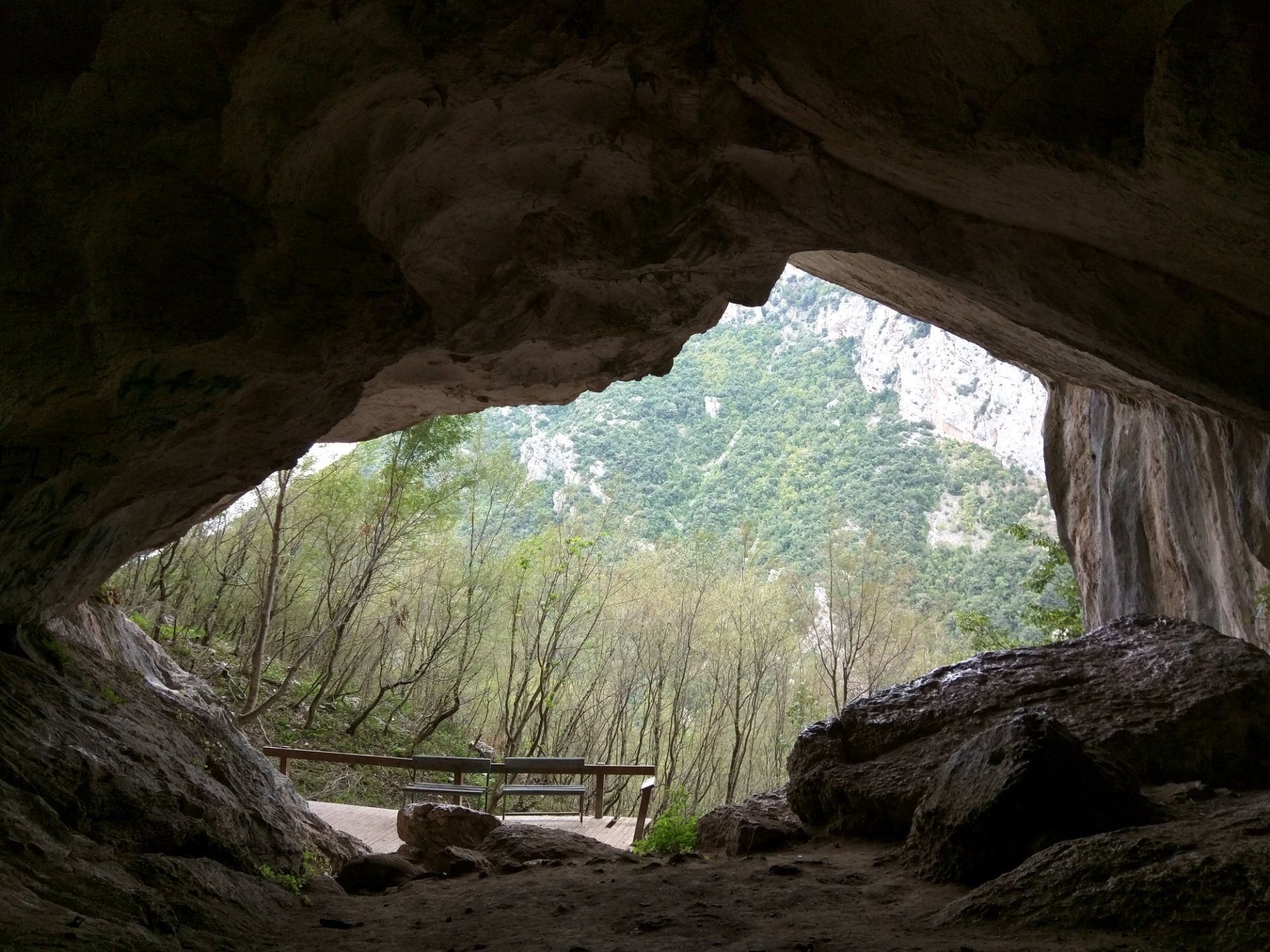.jpeg)
- Pellumbas cave is a vital archaeological site showcasing Albania’s prehistoric history.
- The cave features significant Paleolithic artifacts, including stone tools and animal fossils.
- Located near Mount Dajt, accessible via a scenic hike from Pellumbas village.
- Ongoing conservation efforts aim to preserve its natural and archaeological features.
- Visiting the site offers a blend of natural beauty and deep historical insights.
Table of contents
- Pëllumbas Cave Location: A Hidden Gem on Mount Dajt
- Unveiling Prehistoric Mysteries at Shpella e Pëllumbasit
- Bridging Human Evolution and Mediterranean Archaeology
- Visiting Shpella e Pëllumbasit: A Journey Through Time and Nature
- Conserving Shpella e Pëllumbasit: Safeguarding Albania’s Heritage
Pëllumbas Cave is more than just a cave; it is a window into Albania’s distant past. Hidden on the slopes of Mount Dajt, near the picturesque village of Pellumbas, this archaeological treasure offers a rare glimpse into prehistoric human life.
Pëllumbas Cave Location: A Hidden Gem on Mount Dajt
The Pëllumbas Cave is situated close to Pellumbas village, approximately 15 km southeast of Tirana. Nestled in the scenic terrain of Mount Dajt, the cave presents an ideal mix of natural beauty and archaeological intrigue. The hike to the cave takes about 30-45 minutes along a well-marked trail, making it accessible for hikers prepared for a light trek.
The limestone formations inside the cave—featuring stalactites and stalagmites—highlight the geological processes at work over millennia. The entrance provides a stunning view into a labyrinth of chambers and passages, each revealing delicate mineral formations and a history embedded within the rocks.
Exact GPS coordinates for navigation are approximately 41.3682° N, 19.8822° E. Whether you’re a seasoned hiker or a curious traveler, visiting this site promises an enriching experience in a naturally breathtaking setting.
Unveiling Prehistoric Mysteries at Pëllumbas Cave
The significance of Pëllumbas Cave extends far beyond its natural beauty. Excavations have uncovered a treasure trove of Paleolithic artifacts, marking it as one of Albania’s earliest known human habitation sites—dating back around 40,000 years.
Key archaeological discoveries include:
- Stone Tools: The site has produced hand axes, scrapers, and pointed implements, indicating advanced tool-making skills.
- Animal Fossils: Bones of deer, wild boar, and other wildlife suggest a diet centered around hunting and gathering.
- Fire Use Evidence: Hearths and fire pits imply control of fire, essential for cooking, warmth, and safety.
These discoveries reveal that **Shpella e Pëllumbasit** was an important settlement site where early humans developed survival strategies essential for their adaptation to the environment. The artifacts add crucial pieces to the puzzle of human migration and evolution in the Balkan region.
Bridging Human Evolution and Mediterranean Archaeology
The site’s rich archaeological record enhances our understanding of human evolution in Albania and across the Mediterranean. It highlights early hunting, toolmaking, and fire control techniques that shaped human societies thousands of years ago.
Research at Pëllumbas Cave contributes to the broader narrative of migration patterns throughout the Mediterranean basin. Comparing artifact types and settlement features with other sites helps archaeologists track how ancient populations moved, interacted, and adapted over millennia.
Current collaborations involve the Albanian Institute of Archaeology and international scholars, utilizing advanced techniques to uncover the cave’s countless secrets. These ongoing studies ensure Pëllumbas Cave remains a vital hub for scientific discovery and cultural heritage preservation.
Visiting Pellumbas Cave: A Journey Through Time and Nature
As its popularity grows, Pëllumbas Cave is emerging as a notable destination for those interested in Albania’s natural and archaeological wonders. Whether you’re a history enthusiast or a nature lover, this site promises a memorable experience.
How to Visit
- Hiking from Pellumbas: The most common approach is a 30-45 minute hike along a well-maintained trail. Comfortable footwear and water are recommended.
- Guided Tours: Official guides provide detailed explanations for visitors, enhancing understanding of both geology and archaeology. Pre-booking is advised during peak seasons.
- Practical Info: Opening hours and entrance fees vary; check local sources like the Tirana Tourism Center for the latest details.
What to Expect
Visitors will marvel at the limestone formations—stalactites and stalagmites—inside the cave. The hike also offers breathtaking views of Mount Dajt’s lush landscape. Inside, guided tours highlight archaeological finds, making the experience both educational and awe-inspiring.
Nearby Attractions
- Pellumbas Village: Small cafes and restaurants where you can enjoy local cuisine.
- Mount Dajt: Features hiking trails and the Dajti Ekspres cable car, offering panoramic views of Tirana and beyond.
Exploring Pëllumbas Cave allows you to connect deeply with Albania’s ancient past amid stunning natural surroundings. It’s a perfect destination for a full-day adventure, blending history, nature, and cultural richness.
Conserving Pellumbas Cave: Safeguarding Albania’s Heritage
Protecting Pëllumbas Cave is crucial for maintaining Albania’s cultural and natural legacy. The cave’s delicate environment and archaeological importance require active conservation measures.
Why Conservation Matters
The limestone formations and ancient artifacts are vulnerable to damage from increased tourism, pollution, and vandalism. Preserving this site ensures its features remain intact for future study and enjoyment.
Protection Measures
- Controlled Visitor Access: Limiting visitor numbers to reduce wear and tear.
- Environmental Maintenance: Ongoing efforts to preserve formations and prevent deterioration.
- Pollution Control: Strict rules regarding waste disposal and restricted areas.
- Structural Barriers: Installing barriers in sensitive zones to prevent accidental damage.
The Ministry of Culture of Albania collaborates with NGOs and local authorities to enforce these measures and promote sustainable tourism practices.
Visitors also play a vital role by following guidelines such as staying on designated paths, refraining from touching artifacts or formations, and disposing of waste responsibly. Each visitor’s effort directly contributes to the long-term preservation of this invaluable site.
Pellumbas Cave: Albania’s Prehistoric and Natural Treasure
In conclusion, Pëllumbas Cave stands as a cornerstone of Albania’s cultural patrimony and prehistoric research. Its archaeological discoveries deepen our understanding of early human life, while its natural beauty invites awe and exploration. This ancient cave embodies the harmonious intersection of history and nature.
We encourage everyone to explore more about Albania’s archaeological treasures and support ongoing conservation efforts. Visiting Pëllumbas Cave is more than an adventure — it’s a journey into the depths of human history and natural wonder. Help preserve this unique site for generations to come. Plan your visit today and become part of its ongoing story.


0 Comment